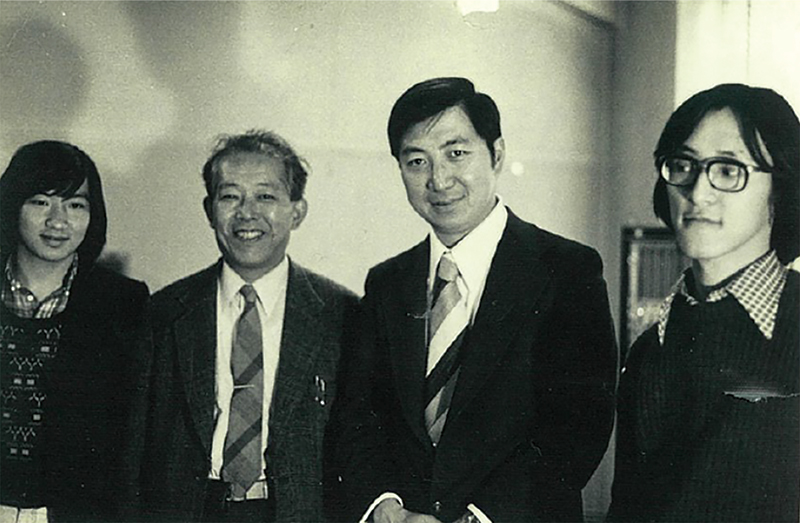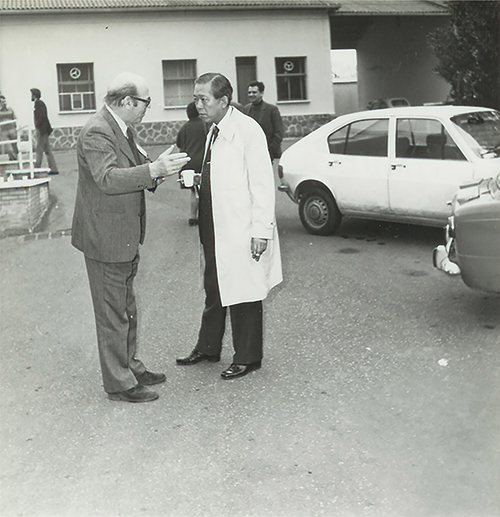Disclaimer: machine translated by DeepL which may contain errors.
Memories of Dr. Koshiba
|
Dr. Masatoshi Koshiba, a giant star of basic science in Japan, passed away on November 12, 2020. He was 94 years old. He was born in Toyohashi City, Aichi Prefecture in 1926, attended Daiichi High School, and graduated from the Department of Physics at the University of Tokyo in 1951, where he became an assistant professor in 1963. I will leave the Kamioka-related matters to Dr. Takaaki Kajita (Special University Professor/Special University Professor Emeritus, The University of Tokyo) and write about the e+e- collision experiment and others.
 Professor Samuel Ting of the Massachusetts Institute of Technology (who won the Nobel Prize in Physics with Professor B. Richter of the SLAC National Accelerator Laboratory for the discovery of J/ψ) was awarded the Nobel Prize in Physics at the University of Tokyo. Physics Prize with Prof. B. Richter of SLAC National Accelerator Laboratory for the discovery of J/ψ) visited the University of Tokyo to give a lecture. The author is on the left.
Professor Samuel Ting of the Massachusetts Institute of Technology (who won the Nobel Prize in Physics with Professor B. Richter of the SLAC National Accelerator Laboratory for the discovery of J/ψ) was awarded the Nobel Prize in Physics at the University of Tokyo. Physics Prize with Prof. B. Richter of SLAC National Accelerator Laboratory for the discovery of J/ψ) visited the University of Tokyo to give a lecture. The author is on the left.In the early 1970s, Dr. Kurokawa recognized the importance of high-energy e+e- collision experiments and started collaborative research with Professor Gersh Budker of Novosibirsk, who was a pioneer in this field, but the project was soon abandoned when Professor Budker collapsed. So, he traveled around Europe and visited the DES in Germany. So, he planned to travel around Europe and participate in the DASP experiment at the e+e- collision storage ring DORIS, which started at the DESY Institute (Deutsches Elektronen-Synchrotron) in Germany. In 1974, soon after the start of this experiment, the J/ψ particle was discovered in the U.S., which set the direction for the current Standard Model of elementary particles. PETRA discovered gluons that mediate strong interactions. In the early 1980s, Europe was planning to build a larger e+e-collider, LEP, at CERN, the Mecca of particle physics, and Dr. Koshiba was the first to get word of this and paved the way for the University of Tokyo to participate. Currently, the International Linear Collider (ILC) is being planned to be constructed in the Kitakami Mountains of Japan as the next e+e-collider after the LEP. The discovery of the Higgs boson at the LHC in 2012 has increased the importance of the ILC, and the construction of the ILC has become an international consensus.
 Dr. Koshiba has a keen eye. With Professor Wolfgang Paul of the Universität Bonn at a meeting at the INFN National Laboratory of Frascati for the launch of the PETRA accelerator in Germany.
Dr. Koshiba has a keen eye. With Professor Wolfgang Paul of the Universität Bonn at a meeting at the INFN National Laboratory of Frascati for the launch of the PETRA accelerator in Germany.Immediately after winning the Nobel Prize in Physics in 2002, he established the Heisei Foundation for Basic Sciences with the prize money and other resources, and has been making great efforts to promote basic sciences by inviting prominent scientists in a wide range of fields as lecturers to hold "science classes for fun," mainly for high school students. He said, "A researcher should always keep a few eggs warm as seeds for future research, and occasionally check to see if they hatch and grow to become big. In the early days of the "Quark Society," an alumni association of the Koshiba Laboratory, he invited as guests everyone from the Director General of the Budget Bureau of the Ministry of Finance, a former schoolmate of his at Daiichi High School, to senior officials of the Communist Party. I met with him for the last time at the November 2019 Quorque meeting. I sincerely pray for the repose of his soul.
Published in Faculty of Science News, January 2021


